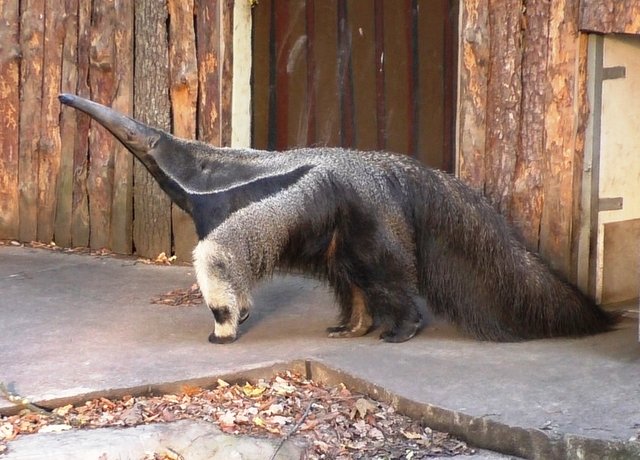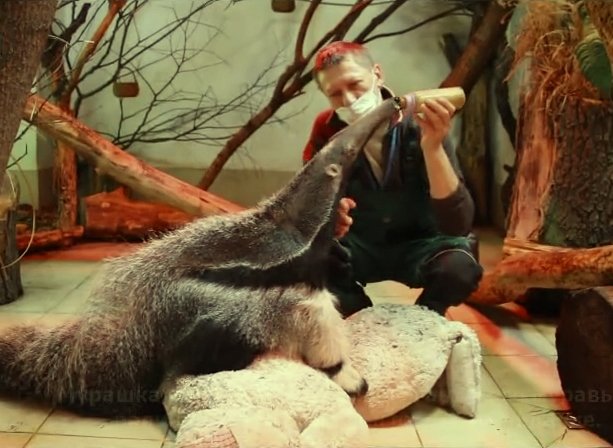Giant Anteater
Anteaters are very unusual animals, they live in South America and have an appearance little similar to other animals. Looking at an anteater, it is quite difficult to imagine what kind of creature it is and what its way of life is. Anteaters belong to the family of incomplete teeth. Teeth, in the usual sense, he does not have, they are in the stomach and serve for grinding food. The anteater feeds on insects and in particular termites, which it catches with a long tongue reaching 60 centimeters in length. To get to the termites hiding in strong termite mounds, the anteater has powerful claws on its front paws, which can not only get food, but also serve as protection from predators. These claws are able to stop the cougar and jaguar, but greatly complicate the walking of the anteater — he is forced to move on the back of the palms of the front paws, turning the fingers with the claws inside.

The first giant anteaters in Russia live in the Kaliningrad Zoo (last fall, another pair of these animals appeared in the Novosibirsk zoo, they came from the zoo in the Danish city of Nykebing-Mors).
The first male Lecturer from the Prague Zoo arrived in Russia in December 2017. In the spring of 2018, a female giant anteater, Kaya, moved to Kaliningrad from the Jesperhus Zoo in Denmark.
In March 2019, the Lecturer and Keya met, and six months later, in September, Keya gave birth to a cub. It turned out to be a girl and she was named Murashka. Female anteaters carry their young on their backs for the first two and a half weeks, and Murashka confidently climbed on their mother's back. But one day the zoo staff found that the cub was lying on the floor in the enclosure. Murashka were urgently taken away from their mother and transferred to artificial feeding.

At first, experts decided that the cub was weakened due to the poor quality of the female's milk, but later it turned out that Murashka on the tongue have a tumor that prevents her from sucking her breast. Feeding a balanced nutritional mixture from a bottle quickly led to the fact that the little anteater cheered up and began to develop normally.
In nature, the number of giant anteaters is constantly decreasing due to changes in the habitat, as well as a great danger to these animals are forest fires, giant anteaters can not escape and die in the fire. The video below shows the gait features of a giant anteater, forced to move on the back of the palms of its front legs, which does not allow it to run fast:
https://rumble.com/vcqkw7-giant-anteater-getting-to-know-the-animal.html?mref=82j2&mc=vgt5y
Zoo populations of wild animals serve as a kind of insurance in case of extinction of the species in the wild and can help maintain natural populations that are in critical condition.
Since my YouTube channel does not have monetization enabled, I upload a video to Rumble, where monetization starts immediately after my video is approved. Withdrawals are possible upon reaching $ 50. If the Rumble-Video Battles application works in your country, then you can also participate in daily contests and receive $ 10 each. If you are interested in me, I will be grateful if you sign up for Rumble using my referral link:
https://rumble.com/register/irvet20065/
Congratulations, your post has been upvoted by @dsc-r2cornell, which is the curating account for @R2cornell's Discord Community.